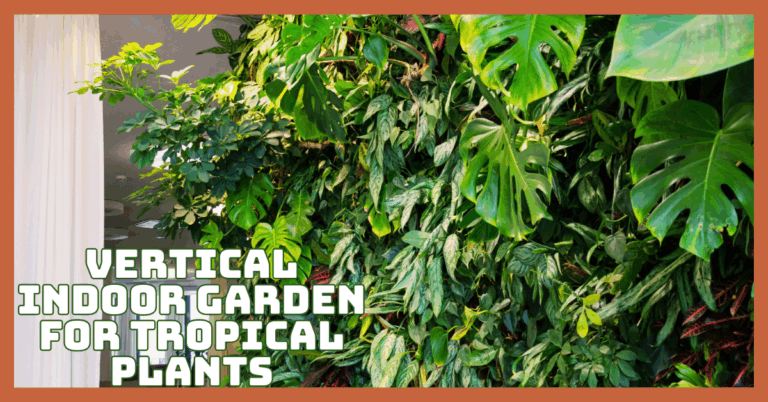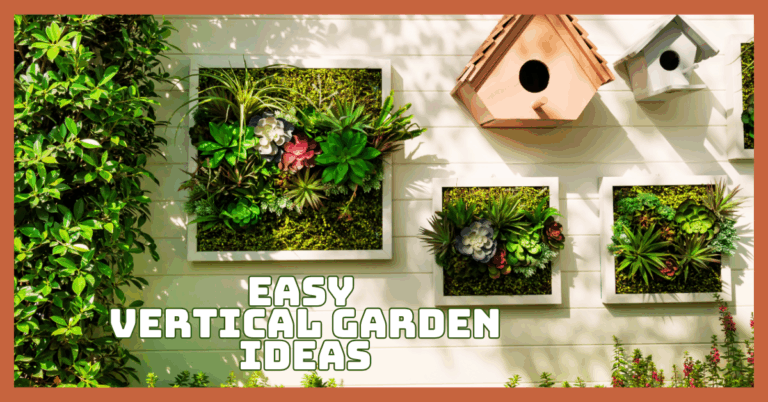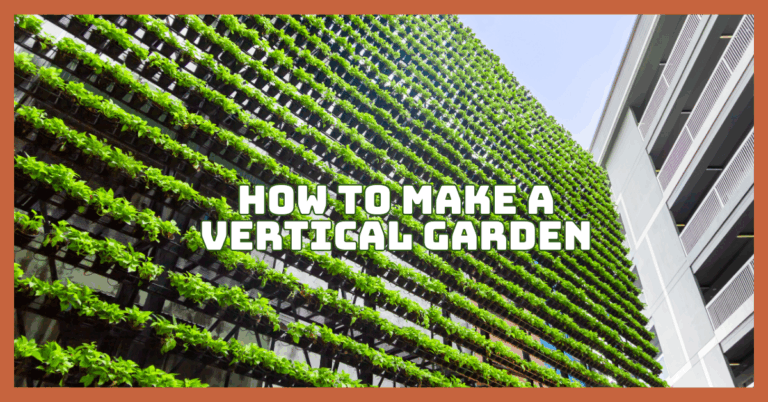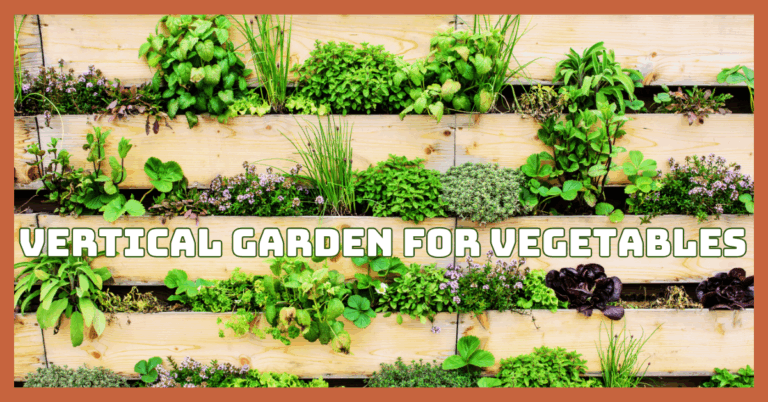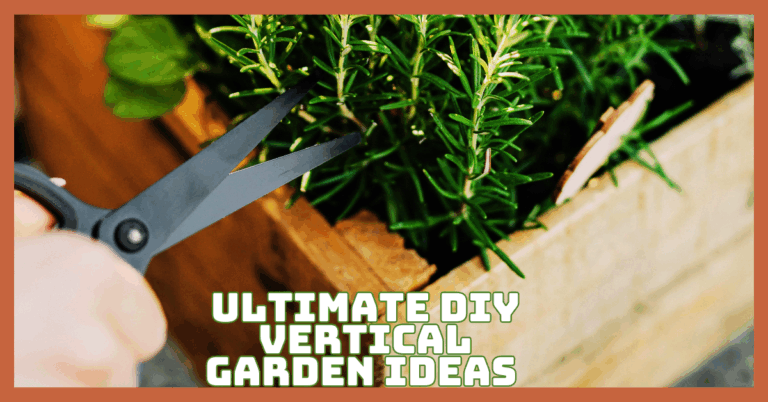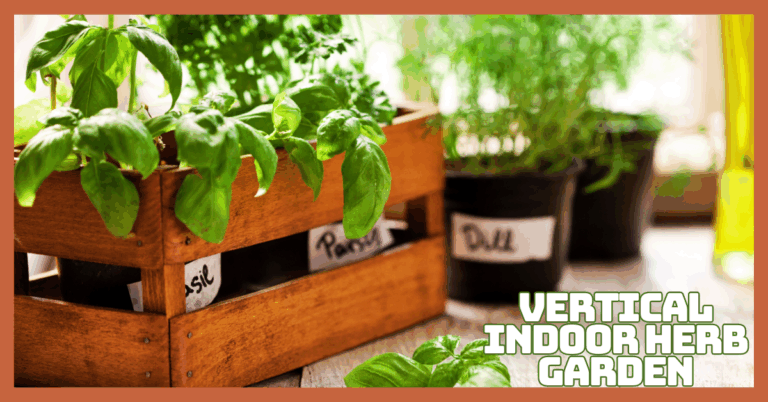Indoor Vertical Herb Garden Ideas You’ll Love
Indoor Vertical Herb Garden Ideas can transform even the smallest space into a lush, fragrant oasis. If you dream of having fresh herbs at your fingertips year-round, a vertical setup is the perfect way to blend beauty, practicality, and sustainability.
Whether you live in a compact apartment or simply love indoor gardening, these creative designs make it easy to grow basil, mint, parsley, and more—right on your wall or windowsill.
With the right materials and a touch of creativity, you’ll enjoy a thriving herb garden that adds greenery and flavour to your home all year long.
Let’s explore how to build and care for your indoor vertical herb garden!
Why Choose A Vertical Herb Garden?
Vertical gardening is a growing trend—and for good reason. Here's why a vertical herb garden makes sense:
1. Maximizes Limited Space
A vertical herb garden uses wall or vertical shelving space, making it perfect for compact living areas. It frees up counters and windowsills while still allowing room for a variety of herbs, helping urban dwellers enjoy gardening without cluttering small interiors.
2. Convenient Access To Fresh Herbs
Having herbs within arm’s reach enhances convenience during meal prep. Whether you need basil for pasta or mint for tea, you can snip what you need instantly, ensuring maximum flavour and freshness without unnecessary grocery trips or waste from store-bought bundles.
3. Year-Round Indoor Gardening
Indoor vertical gardens aren’t dependent on outdoor conditions. With adequate lighting and watering, herbs can thrive throughout every season.
This means you can grow fresh, usable herbs even in winter, making your kitchen vibrant and your meals more delicious year-round.
4. Eco-Friendly And Sustainable
Homegrown herbs reduce reliance on plastic packaging, chemical-laden commercial farming, and transport emissions. Vertical gardening supports a low-waste lifestyle by cutting down on food waste and encouraging organic growth—an excellent way to live sustainably and minimize your ecological footprint.
5. Adds Greenery And Style Indoors
Vertical herb gardens don’t just serve a purpose—they beautify your home. Arranged creatively with wooden frames, wall planters, or hanging pots, they add a fresh, natural look to kitchens or living spaces and improve the overall ambiance of your home.
6. Easy Maintenance
These gardens are simple to manage. Herbs require little more than regular watering, basic pruning, and proper light. With no soil-intensive beds or heavy tools involved, it’s an easy introduction to gardening for beginners and those with a busy schedule.
7. Cost-Effective
Buying herbs frequently can be costly. A one-time investment in an indoor vertical garden saves money over time. Each plant yields many harvests, eliminating the need for repeat purchases and helping you enjoy fresh herbs without ongoing grocery expenses.
8. Promotes Healthier Eating
Having a variety of herbs at home motivates healthy cooking. Instead of processed flavours or sauces, you’ll reach for fresh basil, oregano, or cilantro.
These fresh ingredients add nutrition, support digestion, and make it easier to prepare wholesome, flavorful meals at home.
Turn Your Passion for Nature Into Income
🌿 Whether you love gardening, caring for animals, or exploring holistic living,
You can share your knowledge online and earn from it.
Discover how nature lovers are growing their passions into meaningful, income-generating blogs. 👇
Best Herbs For Indoor Vertical Gardening
Create a lush indoor herb garden with these space-saving vertical ideas. From classic basil to fragrant lemongrass, discover which herbs thrive best in each stylish setup for year-round freshness.
1. Basil
Basil thrives in warmth and bright light, making it perfect for sunny windows or vertical gardens with built-in lighting. Compact varieties like ‘Spicy Globe’ suit wall-mounted pockets or mason jars.
It grows fast and rewards frequent harvesting, ideal for pasta, salads, and pizzas. For tiered shelf gardens or bookshelf setups, basil adds both greenery and fresh flavour. It's perfect for hydroponic towers or rolling herb carts needing sun-loving plants with compact growth.
2. Mint
Due to its rapid growth, mint is best suited for enclosed vertical arrangements such as wall pockets, recycled bottles, or pegboard baskets.
It prefers partial shade and moist soil. Use spearmint, peppermint, or chocolate mint in teas, desserts, and sauces. Its scent adds freshness to kitchens.
Mint suits any design where separation is possible, such as magnetic planters or corkboard walls—keeping it contained while staying within easy reach for daily use.
3. Parsley
Parsley, whether curly or flat-leaf, does well in vertical planters with 4–6 hours of sunlight. It starts slow but continues producing when trimmed from the outside.
Rich in vitamins and versatile for garnishing or cooking, parsley is ideal for ladder shelves, drawer gardens, or bookshelf conversions where consistent lighting is available. It's also an excellent choice for rolling towers or kitchen racks that keep it near your cooking station while saving space.
4. Cilantro (Coriander)
Cilantro prefers cool temperatures and bright light, thriving best in vertical gardens near east-facing windows. It's great for mason jars or drawer-style gardens.
Harvest leaves often before they bolt in the heat. If it flowers, save the seeds as coriander spice. It complements recycled bottle gardens or pegboard planters where airflow is good.
Use cilantro (coriander) in Mexican, Indian, or Asian dishes for bold, fresh flavour that’s right at your fingertips.
5. Chives
Chives require minimal space and adapt well to most vertical herb setups, from hanging jars to fridge magnets. They prefer full to partial sunlight and regular watering. Their oniony flavour works well in soups, salads, eggs, and dips.
Chives suit pegboard walls, mason jars, or corkboard herb gardens where you need compact, quick-growing herbs. They’re also ideal for vertical towers or pallet gardens where planting space is limited but airflow is strong.
6. Oregano
Oregano thrives in well-drained vertical containers with bright light. Low-maintenance and hardy, it’s perfect for Mediterranean recipes.
Trim it frequently to encourage new growth and prevent it from becoming woody. Best suited for hanging mason jars, hydroponic towers, or bookshelf gardens, oregano handles dry conditions well.
It also fits beautifully in pegboard setups or window frame gardens, where its scent and flavour add character to both your dishes and your decor.
7. Thyme
Thyme’s small leaves and woody stems make it perfect for vertical planters, especially those with excellent drainage, like tiered shelves or pegboard baskets.
Dry soil is preferred, and full sun is required. Great for flavouring meats and vegetables, it’s a perennial herb that grows year-round with adequate light.
Try it in hydroponic towers, window frame setups, or kitchen racks, where it’s easy to reach and gets enough airflow to thrive.
8. Rosemary
Rosemary needs intense light and dry conditions, making it perfect for vertical setups with built-in lighting or sunny kitchen windows. Choose upright varieties for wall-mounted planters or ladder gardens. Let the soil dry between waterings.
Use rosemary for roasting, breads, and oils. It’s ideal for drawer gardens, pallet setups, or bookshelf conversions. Its aroma also acts as a natural air freshener, perfect for well-ventilated spaces like kitchens or sunrooms.
9. Sage
Sage prefers dry soil and at least 6–8 hours of light daily, thriving in vertical setups like wall planters, tiered shelves, or drawer gardens. Choose dwarf varieties for smaller spaces. Its savoury leaves enhance stuffings, meats, and herbal teas.
Sage is an excellent fit for vertical herb gardens with airflow and spacing, such as pegboards or hydroponic towers. Use it in kitchens where its intense flavour and attractive gray-green leaves add culinary and visual appeal.
10. Lemongrass
Lemongrass grows upright and enjoys warm, sunny environments, making it ideal for bright kitchens or balconies with vertical planters. Cut outer stalks for cooking or teas.
It thrives in tiered shelf setups, pallet gardens, or hydroponic towers with intense light. Its citrus scent freshens up indoor spaces.
Lemongrass suits vertical gardens where root space is deeper, and airflow is steady—ideal for kitchens that get good sun or systems with integrated grow lights.
Indoor Vertical Herb Garden Ideas
Discover creative and space-saving ways to grow fresh herbs indoors. These vertical herb garden ideas are perfect for small spaces, stylish setups, and year-round indoor gardening success.
1. Wall-Mounted Planter Pockets
Wall-mounted planter pockets are ideal for vertical indoor herb gardens. Choose breathable felt or fabric pockets with multiple compartments (6–12). Mount the structure securely on a sunlit wall using screws or adhesive hooks.
Fill each pocket with lightweight potting soil and plant herbs like basil, thyme, or mint. These pockets offer superb drainage and airflow, which helps prevent root rot. Water gently and allow excess to drain.
Cost ranges from $15 to $40. Ideal for USDA Zones 3–10 when placed indoors near a bright window or with supplemental grow lighting. Perfect for renters or limited-space dwellers.
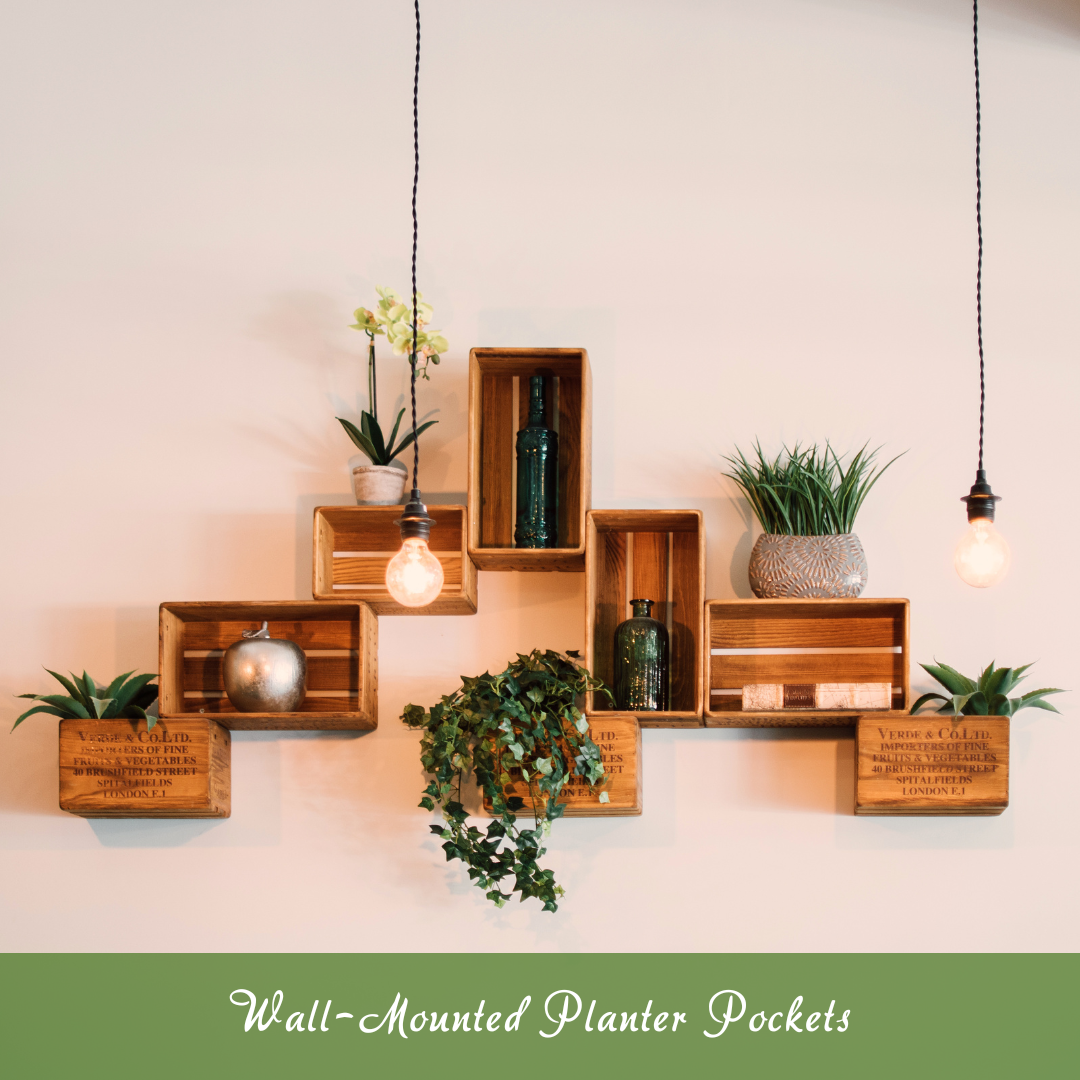
2. Repurposed Wooden Pallet Garden
Transform a wooden pallet into a rustic vertical herb garden. Select a clean, heat-treated pallet and sand it down to remove splinters.
Add landscape fabric behind each slat to form planting troughs, and stand the pallet vertically. Paint or stain it to match your indoor decor. Fill each space with potting mix and herbs like parsley, thyme, or oregano.
Pallets can hold several plants and make a charming display. The estimated cost is $25–$50. Works well in USDA Zones 3–10 when kept indoors in a well-lit room or near a south-facing window.
3. Hanging Mason Jar Herb Wall
Create a beautiful herb display using mason jars. Start with a wooden board or metal rack mounted to your kitchen wall. Attach metal clamps or pipe holders to secure each jar.
Place small pebbles at the bottom for drainage, add quality soil, and plant herbs like cilantro, dill, or chives. These jars allow you to see root development. Be cautious with watering, as jars lack drainage holes.
Total cost is $20–$40, depending on the materials used. Suitable for USDA Zones 4–10 when placed indoors in bright kitchens or with artificial light support.
4. Vertical Hydroponic Towers
Vertical hydroponic towers are efficient, modern, and soil-free. Purchase a pre-built tower or build one with stacked PVC piping, a water pump, and net pots.
Fill the reservoir with nutrient solution and insert herb seedlings like basil, mint, or oregano. Many systems include built-in LED lights and timers for watering.
These promote fast, clean growth and reduce mess. Expect to invest $100–$250. This setup suits USDA Zones 3–11 and works year-round indoors, especially in low-light homes where traditional gardening isn't possible.
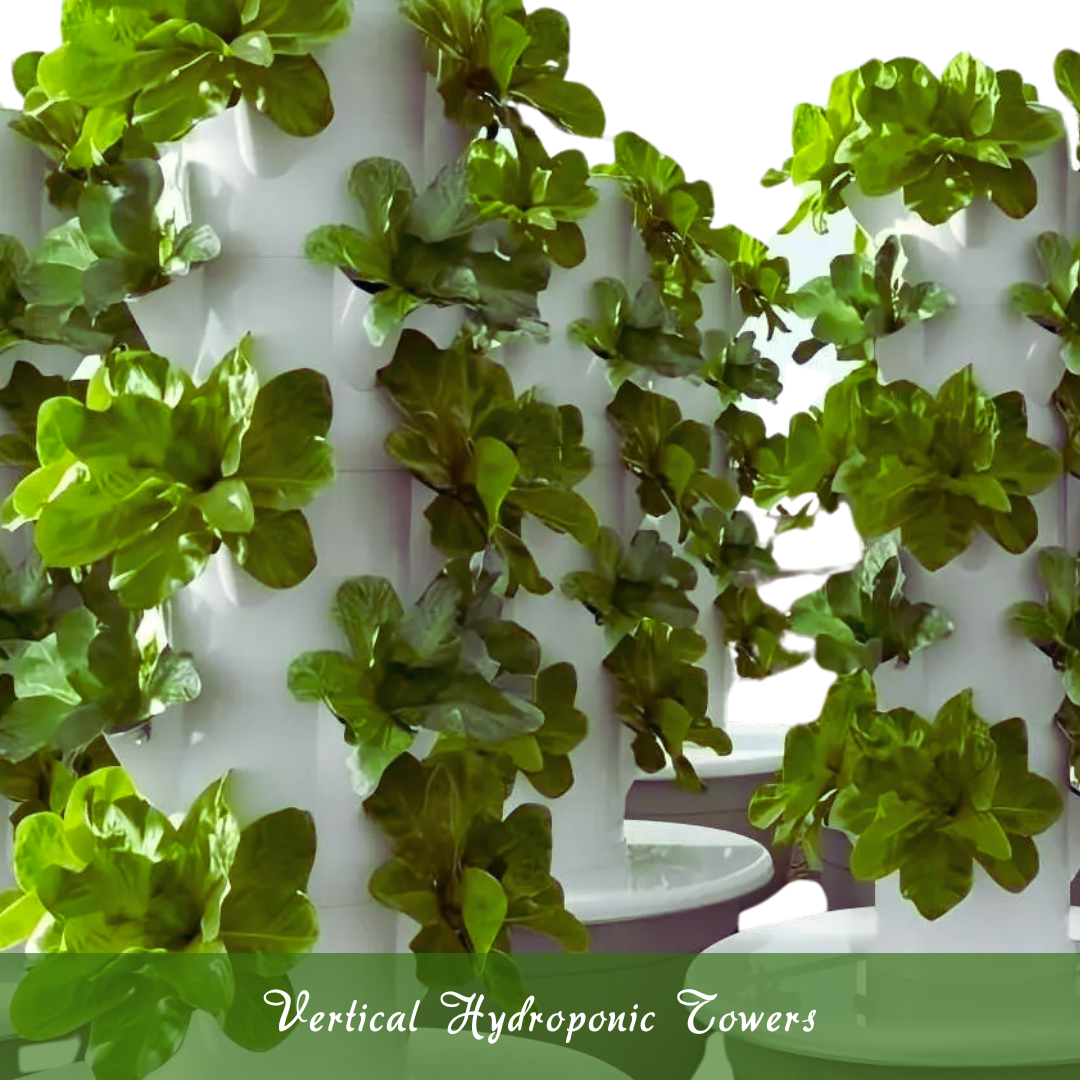
5. Pegboard Herb Wall
A pegboard herb wall is both stylish and versatile. Mount a metal or wooden pegboard on your kitchen or living room wall. Use hooks or baskets to hang small herb pots and allow rearrangement as needed.
Fill each pot with quality soil and grow herbs like rosemary, basil, or thyme. The pegboard can be painted or customized to match your interior.
The estimated cost is $30–$60. Works best in USDA Zones 3–10 indoors, positioned near a window with filtered light or supplemented by LED grow lights.
6. Tiered Shelf Gardens
Use a leaning ladder shelf or stackable tiered shelving to create a vertical herb setup. Place ceramic or wooden planters on each level, with sun-loving herbs like basil on top and shade-tolerant ones like mint below.
Ensure each shelf has a drip tray to protect surfaces. Position near a sunny window or install grow lights. It’s an organized, space-efficient option.
Costs range from $40–$100 based on shelf quality. Great for USDA Zones 3–10 indoors in rooms with good sunlight or lighting support.
7. Window Frame Herb Display
Repurpose an old wooden window frame into a charming vertical herb garden. Attach lightweight pots or baskets to each grid space using hooks or wires. Mount the frame on or near a sunny window.
Fill each container with soil and grow herbs like oregano, thyme, or basil. You can style it with colourful pots or chalkboard labels for flair. This design acts as decor and functionality.
The estimated cost is $20–$40. Ideal for USDA Zones 4–10 in homes with good light exposure near kitchen or living room windows.

8. Magnetic Herb Planters On The Fridge
Turn your refrigerator into a vertical garden using magnetic planters. Buy lightweight, magnet-backed containers or make your own using tins and adhesive magnets.
Fill them with potting mix and herbs like chives, basil, or parsley. For drainage, place little stones at the bottom. Avoid overwatering due to limited root space.
This setup keeps herbs within reach while saving counter space. Total cost is around $15–$30. Suitable for USDA Zones 4–11 when used indoors in kitchens with bright, indirect light or supplemental LEDs.
9. Hanging Herb Garden From Your Ceiling
Suspend a floating herb garden from your ceiling using macramé or rope plant hangers. Install ceiling hooks near a window or use tension rods in sunlit corners.
Use lightweight pots filled with soil and herbs like mint, dill, or parsley. Arrange them at different heights to maximize light exposure.
Rotate occasionally for even growth. This method frees up floor and wall space while creating a unique green feature. Costs range from $20–$50—perfect for USDA Zones 3–10 indoors near large, bright windows.
10. Bookshelf Conversion Garden
Convert an unused bookshelf into a neat herb-growing station. Line each shelf with waterproof trays and place potted herbs like thyme, basil, and cilantro on them.
Add LED grow lights beneath each shelf if natural light is insufficient. Label each herb and keep your indoor garden tidy and organized.
Taller plants can be accommodated by adjusting the shelves. The estimated cost is $40–$100, depending on bookshelf size and lighting setup. Works well for USDA Zones 3–11 indoors in living rooms, offices, or kitchens.
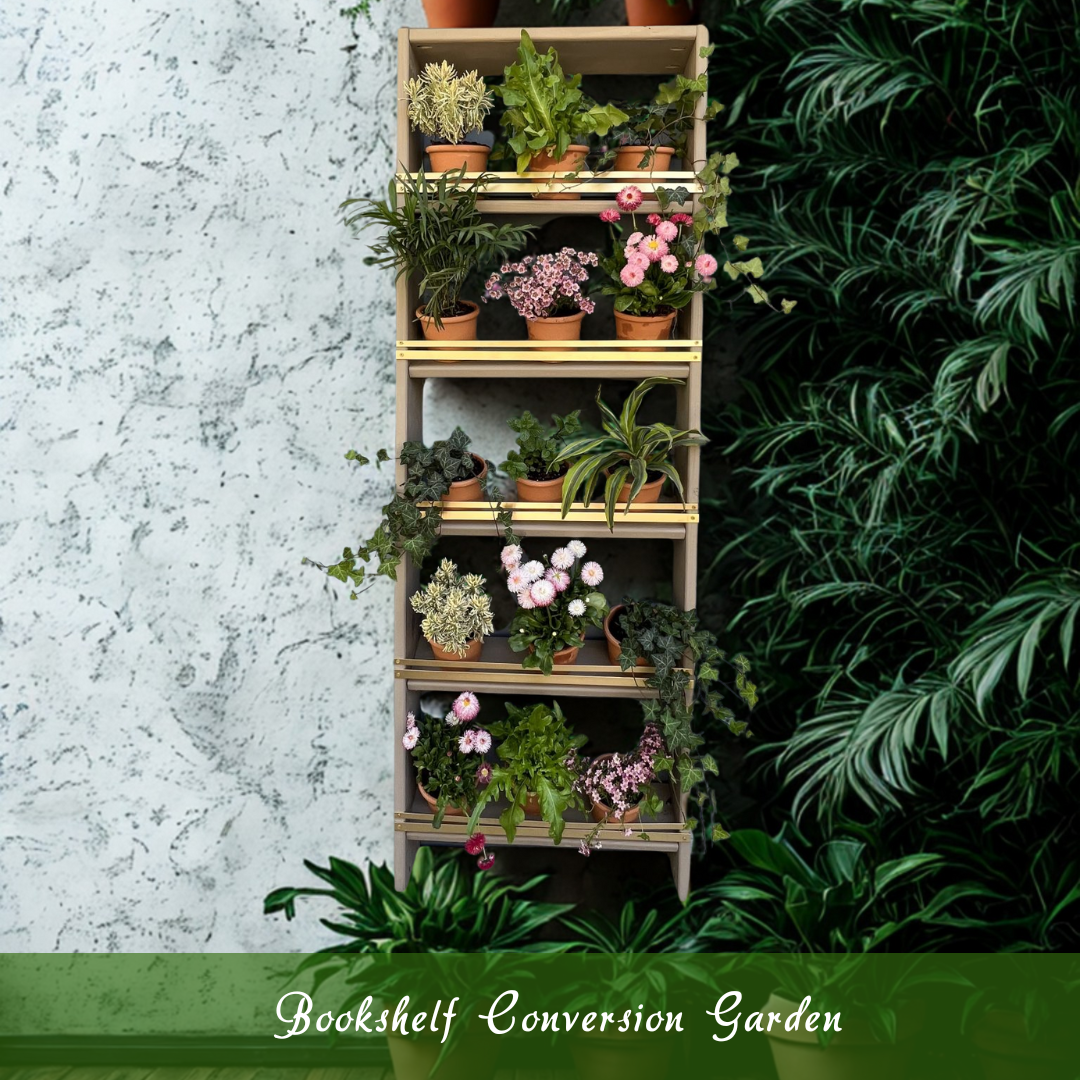
11. Kitchen Rack Herb Setup
Install a vertical metal or wooden kitchen rack to hang herb baskets or pots. Use S-hooks for hanging or add adjustable shelves.
This setup keeps herbs like parsley, rosemary, and chives within easy reach while cooking. Place the rack near a kitchen window or under cabinet-mounted grow lights.
You can even include a small chalkboard for labelling herbs. Total setup cost ranges from $30–$75. Ideal for USDA Zones 4–10 in indoor kitchens with decent light exposure.
12. Ladder Garden Display
Repurpose a decorative wooden ladder and lean it against a well-lit indoor wall. Place small herb pots on each rung, labelling them with chalk tags or mini signs.
Use lightweight planters to prevent tipping and water carefully to avoid drips. Grow herbs like basil, sage, and oregano. This compact setup fits perfectly in corners or small balconies.
The estimated cost is between $30–$70. Works well in USDA Zones 3–10 indoors near a bright window or with grow lights added.
13. DIY Recycled Bottle Garden
Create a sustainable vertical garden using recycled plastic bottles. Cut openings into the sides of each bottle and drill drainage holes at the base.
Fill with soil, plant herbs like mint, basil, or parsley, and string bottles vertically using wire or rope. Secure the structure to a sunny wall. This eco-friendly project minimizes waste and costs nearly nothing.
Total expense ranges from $0 to $10, depending on the materials you already have. Ideal for USDA Zones 4–11 in well-lit indoor or semi-enclosed spaces.
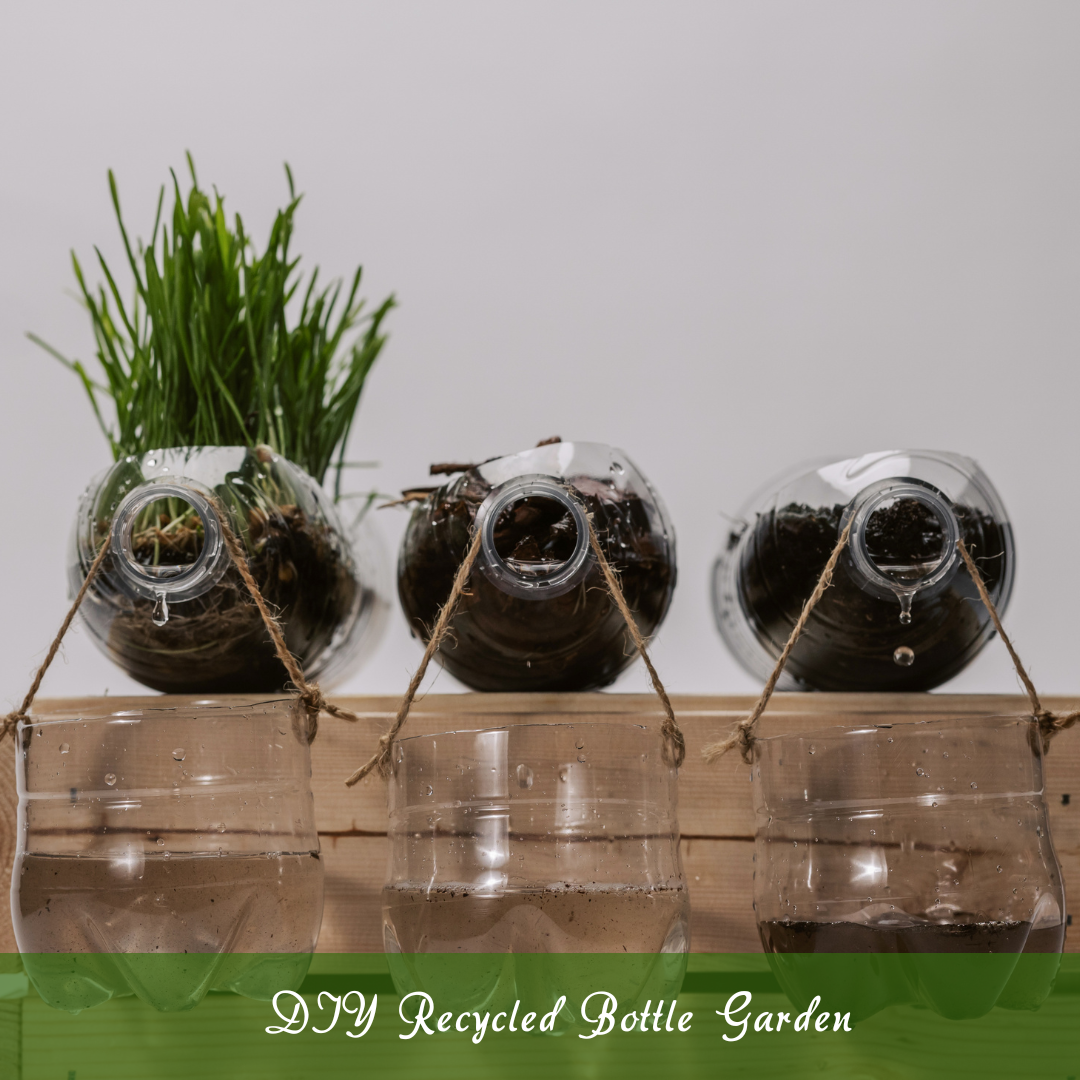
14. Stackable Planter Towers
Stackable planter towers are compact, efficient solutions for growing multiple herbs in a small footprint. These planters have tiered levels that lock or sit atop each other, each with pockets for planting.
Fill each level with potting mix and herbs like basil, chives, or oregano. Place taller herbs on top to ensure even light distribution.
Some models include built-in water reservoirs or self-watering features. Great for kitchen corners or balconies with natural light or grow lights.
Costs range from $30–$70. Suitable for USDA Zones 3–11 indoors, offering easy maintenance and vertical gardening convenience.
Conclusion
An indoor vertical herb garden is a lovely and helpful way to add greenery and new flavours to your house, especially if you have limited space. It offers year-round access to nutritious herbs while enhancing air quality and decor.
With simple steps and minimal maintenance, anyone can create a thriving vertical garden that supports healthy cooking and sustainable living.
Establish an indoor herb garden now to take advantage of the ease, aesthetic appeal, and advantages it offers to your everyday existence.
I trust you enjoyed this article on the Indoor Vertical Herb Garden Ideas You’ll Love. Please stay tuned for more inspiring guides, helpful tips, and ideas to help you live closer to nature every day.
Take care!
— JeannetteZ
💬 Your Opinion Is Important To Me
Do you have thoughts, ideas, or questions? I’d love to hear from you. Please leave your comments below or email me directly at Jeannette@Close-To-Nature.org.
📚 More Nature-Inspired Reads
Explore more ways to connect with nature, nurture your pets, and live in harmony with the world around you 🌿


